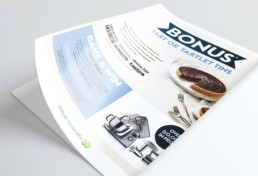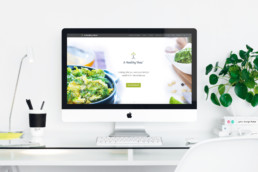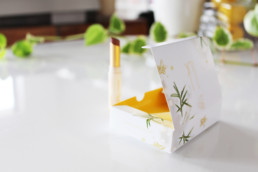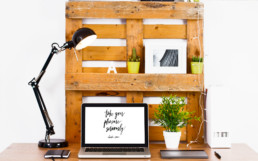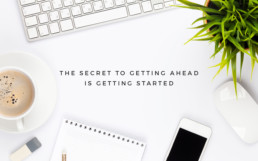Graphic Design: Outsource or Hire in House
It is a question that most managers will face at some point, to outsource or not?
Pros and cons of outsourcing graphic design
Pros
- Fixed Budget: Outsourcing or contracting saves on employee costs, sick days, tax, entitlements, and allows you to work to a fixed budget. Once the project is complete, you may have a period of inactivity – guess what, no costs until you’re ready to move on to the next phase. (And no ‘finding work’ for underused employees in quiet periods).
- Fresh (Experienced) Eyes: Sometimes in house design teams can work on a brand, with a specific set of brand guidelines for long periods of time. We often receive the feedback that a pair of ‘fresh eyes’ can breathe new life into your companies designs. A newly contracted design agency is also more likely to work hard to listen to your specific needs and want to please you to secure more work, so they are likely to go above and beyond.
- Ability to Meet Competing Timelines: An outsourced team can allow you to progress multiple projects with competing deadlines. While your in house team may be required to handle longer term projects, outsourcing your sprints may allow you to deliver concurrent projects instead of delaying – and then take a much needed break.
Cons
- Cost: You may be able to hire an in house junior designer to work for a lower hourly rate than outsourcing to a creative agency. But with this lower cost may come a less experienced designer. Sometimes at Mindful Design Collective we find that our clients like to have an in house designer to assist with day to day designs and roll outs to cut down on costs while we focus on the initial concept driven designs and bigger picture projects.
- Immediacy: With an in house team there is no doubt that you can experience more immediate communication. At Mindful Design Collective, although we won’t come and sit in your office (unless your coffee is very, very good, in which case we may consider it) we do encourage our clients to communicate with us on Slack for an instant messaging experience, and strive to respond to emails within hours, if not minutes, rather than days.
- Placing responsibility: The look and feel of your work will rest on another company’s efforts, so you need to find dependable graphic designing shops that work to your specifications. At Mindful Design Collective our goal is to develop long term relationships with our clients so that we can be responsible custodians of the brand. We are more protective of the brands we work with than anyone!
Over the years some of our most productive relationships have been with medium to large sized businesses who have a Director of Marketing and have outsourced some or all of their graphic design to us. Most of these businesses were large enough to employee in house graphic designers, but for one or several of the reasons above chose to engage us, either for fixed contracts or longer term retainers. These clients include Michele Bridges 12WBT, RateCity, News Ltd Australia, luk beautifood, Waverley Council and the National Rugby League.
Green Hosting
A web server that needs to keep the many, many, many websites up and running uninterrupted throughout the year consumes, as you an imagine, a considerable amount of energy in the process. Just imagine the scale of operations that are required to power up the countless data centers that comprise of several of these web servers across the globe!
One way to reduce your impact on the environment as a business is to consider a green hosting provider.
What is green hosting?
Green hosting is a form of website hosting that utilises renewable or sustainable energy sources such as the solar and wind to not only power up the web servers but also to offset the energy consumed by other web servers. Additionally, a green host web server is designed to minimise the level of energy consumption by their web servers. Apart from taking care of the energy requirements of the web servers, green web hosts are also involved with following safe equipment disposal plans which ensure recycling harmful computer and related waste in a way that it does not pose hazardous for the environment.
Studies indicate that while a typical web server generates north of 630kg of carbon dioxide every year, a green web host produces none! And believe it or not, but the statistics conclude that by the year 2020, the pollution caused by these web servers will be more than that caused by the airline industry.
How green hosting can help your business
The one obvious impact of incorporating green web hosting into your business strategy is the positive impact on the environment around you. When you realise that there is a web server that is working round the clock to keep your website up, you will be able to understand the constant draining of environmental resources that you are contributing to. Here, green hosting changes the game and reduces environmental damage.
Another important benefit of marketing your business as a green web host is the positive reputation that you gain among your consumers, investors, and stakeholders. There is is a growing consumer base of environmentally conscious consumers, voting with their feet and their wallets and choosing to buy from or associate with brands whose ideals align with their own. A recent survey of 543 US adults indicates that about 60% of the consumers are likely to make a purchase from a website that claims to use green energy.
At Mindful Design Collective we host our websites primarily with Digital Pacific. Digital Pacific is an Australian Hosting provider, they conduct Quarterly reviews of their carbon footprint, estimating the emissions generated for every aspect of the business including the daily operation and maintenance of hosting servers, routers and air conditioners. Following each review the company purchases carbon credits to cover one hundred per cent of its estimated emissions. To promote the idea of offsetting business carbon emissions and to prompt others to similarly consider their carbon footprint, all Digital Pacific customers have the option to display the certified “EcoHost” logo on their sites.
But there are plenty of green hosting options and at Mindful Design Collective we can help you consider the best, if any, option to suit your specific hosting needs.
Green hosting is a form of website hosting that utilises renewable or sustainable energy sources such as the solar and wind to not only power up the web servers but also to offset the energy consumed by other web servers.
How green hosting can help your business
The one obvious impact of incorporating green web hosting into your business strategy is the positive impact on the environment around you. When you realise that there is a web server that is working round the clock to keep your website up, you will be able to understand the constant draining of environmental resources that you are contributing to. Here, green hosting changes the game and reduces environmental damage.
Another important benefit of marketing your business as a green web host is the positive reputation that you gain among your consumers, investors, and stakeholders. There is is a growing consumer base of environmentally conscious consumers, voting with their feet and their wallets and choosing to buy from or associate with brands whose ideals align with their own. A recent survey of 543 US adults indicates that about 60% of the consumers are likely to make a purchase from a website that claims to use green energy.
At Mindful Design Collective we host our websites primarily with Digital Pacific. Digital Pacific is an Australian Hosting provider, they conduct Quarterly reviews of their carbon footprint, estimating the emissions generated for every aspect of the business including the daily operation and maintenance of hosting servers, routers and air conditioners. Following each review the company purchases carbon credits to cover one hundred per cent of its estimated emissions. To promote the idea of offsetting business carbon emissions and to prompt others to similarly consider their carbon footprint, all Digital Pacific customers have the option to display the certified “EcoHost” logo on their sites.
But there are plenty of green hosting options and at Mindful Design Collective we can help you consider the best, if any, option to suit your specific hosting needs.
Sustainable Packaging Design
Eco friendly or ‘sustainable’ packaging is good for the planet, helps to identify your businesses values with your consumers and is understandably a hot trend right now. With an increasing awareness about the environmental damages caused by traditional packaging styles, more and more consumers are now favouring packaging solutions that have negligible impacts on the ecosystem and are driving both designers and company owners to go green. Here I share some thoughts on getting started.
Adopt the lifestyle approach
If you’re serious about analysing your packaging, there are Life Cycle Assessment tools to analyse the level of environmental hazards that the different packaging options pose. These can be helpful in making more informed decisions about materials and box designs based on a standard set of environmental indicators. This helps to look at the bigger picture, beyond the specific material you are using, to the impact of the whole project. For example, when PUMA introduced its Red colored ‘Clever Little Bag’ for packaging its shoes, it not only strategically cut down on its paper consumption by 65%, but also reduced the consumption of diesel, energy and water for manufacturing by north of 60%.
Investigate the various package elements
There are several factors of packaging design that cumulatively contribute towards sustainability such as volume, weight and material of the package. By determining the impact of each of the influential factors, you can also innovate and develop new and improved ways of modifying your current packaging process. An interesting parameter to achieve sustainability is to design a package that can be used even after consuming the product. For instance, in 2010, KFC introduced its polypropylene ‘Sides container’ and marketed it as reusable and dishwasher and microwave safe.
At Mindful Design Collective we worked with luk beautifood on their lipstick packaging which is a wrap, reusable as a screen or glasses cleaner. This gave the product a distinct edge as nearly all other lipsticks are packaged in a box, protected the product in shipping, saving on other padding, and provided a sustainable element to their packaging relevant to their client base.
‘Making a difference isn’t just pie in the sky idealism that makes the heart feel good; it’s good business sense that the head can embrace as well’.
- Michael Bunting, The Mindful Leader
Make it a perfect fit
Regardless of how sustainable a substance you incorporate for packaging your products is, your packaging design will not entirely be eco friendly unless it has been developed using the minimum amount of materials. Consider keeping your box design a perfect fit for the item to be placed inside (with sufficient space for safety padding) and cut back on anything excess. GlaxoSmithKline Consumer Healthcare did away with its supplementary packaging and the additional insert for its Os-Cal calcium supplement and introduced its redesigned polyethylene bottle wrapped within a shrink sleeve label that carried all the relevant product information. The redesigned packaging saved about 208 tons of paper and cut down on the Co2 emissions by nearly 330,000 lb.
Advertise your sustainable design
While being personally aware of your contribution towards conserving the nature might be a reward in itself, it wouldn’t hurt to let your customers know that they too will be part of the green movement if they buy your products. By mentioning that your package design is eco friendly and also using green symbols such as the recycling logo, you can not only make your customers a voluntary part of your quest to environment conservation, but also boost your sales multiple times over. You might even want to go one step further and look into B Corp certification, which looks at all elements of your corporate sustainability and ethics in production.
The Dow Jones Sustainability index performed an average of 36.1% better than the traditional Dow Jones Index over a period of five years*
Going green can be good for the bottom line
In a 2015 Harvard University study, researchers analysed a range of investments across industries to try to identify whether companies that focused on sustainability performed any better than those who didn’t. For the study, sustainability was defined as ‘a companies voluntary actions to manage its environmental and social impact and increase its positive contribution to society’. According to the study, the overwhelming evidence was that ‘firms with good ratings on material sustainability outperform those with poor ratings on these issues*’.
In 2016 Goldman Sachs reported that ‘more capital is now focused on sustainable business models and the market is rewarding leaders and new entrants in a way that could scarcely have been predicted even fifteen years ago’ **
According to ‘The Mindful Leader’ by Michael Bunting, the International Finance Corporation found that the Dow Jones Sustainability index performed an average of 36.1% better than the traditional Dow Jones Index over a period of five years.
As Bunting summarises: ‘making a difference isn’t just pie in the sky idealism that makes the heart feel good; it’s good business sense that the head can embrace as well’.
Don’t be afraid to start small
If you are just getting started, don’t be put off by all of the seemingly overwhelming options available. You don’t need to revolutionise the industry to make a difference, and every little bit helps. You can start by looking at the amount of printing you do, whether all of the components of your packaging are necessary and begin to ask questions about your stock (paper) selection, your printing processes, choice of printer.
Sustainable packaging design is a continuous process which essentially requires consistent efforts and innovation in a bid to enhancing your prospects and developing better technologies. If consumers, designers and business owners are all asking for (dare I say demanding) better solutions, better answers to the question ‘how does this impact the environment’ and ‘can we do any better’ this field will only get better and better with time.
- Khan, M., Serafeim, G., & Yoon, A. (2015). Corporate Sustainabiliy: First Evidence on Materiality. SSRN Electonic Journal. http://dx.doi.org/10.2139/ssrn.2575912
- Goldman Sachs (2007, June 22). GS SUSTAIN, 12. Retrieved from natcapsolutions.org/business-case/GoldmanSachsReport_v2007.pdf
- International Finance Corporation/ (2012). The business case for sustainability 4. Retrieved from ifc.org/wps/wcm/connect/9519a5004c1bc60eb534bd79803d5464/Business%2BCase%2Bfor%2BSustainability.pdf?MOD=AJPERES
- Bunting, M.(2016). The Mindful Leader, 7 Practicesfor Transforming Your Leadership Your Organisation and Your Life. ISBN 9780730329763. Wiley & Sons.
Find the perfect graphic designer for your small business
If only there was a tinder to connect designer and client. There’s thousands of designers, and thousands of design jobs that need doing, so how do you go about finding the perfect graphic designer for your small business?
Here’s some ideas to get you started on the path to the perfect fit.
5 things to ask yourself, 5 places to begin the search and 5 things to ask the shortlist.
Before you begin, arm yourself with a bit of knowledge about your own style of working and what you are looking for. Things to ask yourself:
1. What is my budget
Doing a new brand, visual identity, logo design or website is a bit like putting in a new kitchen. You need someone to guide you but there are many options along the way that can make a big difference to the overall cost. Have an idea in mind of what you would like to invest at this point in time on your businesses visual presence. That way you can quickly cut to the quick with some ballpark costs and see whether you are in a good price bracket fit with the designer you are keen on. No designer will like to quote off the cuff, it takes time and thought to give a proper estimate, however many will be able to give you ballparks of what some previous jobs cost, or what a standard job might look like and cost, without too much drama.
2. Do I prefer to work with a team or a single person
There’s pros and cons here. When a single person gets sick, or has a bottleneck of work, there is only one person to handle it, whereas a team may be more reliable overall. However, if you’re working with a team, you’re not really 100% sure the person you talked to at the beginning is going to be the one doing the designs.
3. Do I prefer to meet in person or is remote okay?
Are you a talker or a writer? Is it important that your designer come to see your factory, your home, your office, or can you work via skype and the wonderful internet. For example – I’m based in Sydney’s Eastern Suburbs and I have clients all over the world, as well as locally. For some of my local clients it is really important that I see their workspace, meet their staff, touch the product, and we meet in person regularly. For some of my clients skype and email is enough, and the different time zone and currency often works in their favour (thanks to the Australian dollar!). Nothing like sending a brief before you go to bed and waking up to some shiny new designs to look at.
4. Is the subtlety of language and culture important to my brand, do I need someone who ‘get’s the language and nuances of my niche?
Some designers will cut and paste whatever you give them, and some will read the text and use their design skills to really make the content sing – pulling out important pieces, highlighting when something doesn’t make sense and going the extra mile to communicate your message through all of the design avenues available to them. Is this important to your brand?
5. Timeframe – do you have a deadline that you need to hit?
This may become an important factor in your selection, and if it’s a concrete deadline best to communicate it right at the beginning.
Right – now you are ready to start looking. Some ideas on where to start:
1. Word of mouth.
Ask your friends, partner, colleagues, you’d be surprised how effective this is. Someone always seems to know a designer…
2. Other designs you have seen that you like.
If you see a packaging design, an EDM, a website, a business card that you think looks great – ask the business who did their design.
3. Google – probably not the most effective way, but if you narrow down your search terms you might get closer to finding a good fit.
For example, if you decided location was important to you, and you wanted a designer in Sydney – be as specific as possible with your search (eg health and wellbeing brands graphic design Sydney eastern suburbs). Not just Sydney graphic designer.
4. Behance, pinterest, instagram.
All of these are visual mediums showcasing, among other things, a lot of design work. You’re likely to see something you like – and then see point 2 – get in touch!
5. Awwwards.
If a website is what you are after, definitely check out awwwards – if nothing else, it will get you inspired about what is possible for your site, and it also has a handy directory of web designers and developers.
By now you will have a short list. Yesterday one of my clients asked me these questions, which I thought were a fantastic way of getting to know me a bit better and seeing if we would be a good fit working together. Have a look at what you found important from the first list, and then consider asking the shortlisted designers or agencies:
1. What do people most like about working with you?
2. Why do your clients choose you over the competition?
3. Do you outsource any of the work or do you do it all yourself?
4. Do you maintain the sites you’ve designed after the site launches? If so, what does that entail? If not, what do you recommend?
5. How do you handle a client if they’re not happy with the work, e.g. don’t love the designs?
Good luck in your quest!
xd
the barefoot designer
My Top 10 resources When Starting Your New Business
Starting a new business can be daunting. There’s a million things to do, and all of a sudden you need to become marketer, administrator, accountant, designer, product manager as well as CEO!
At Label I often find myself working with amazing individuals in this position and the good news is, there are lots of resources out there to help you become the Jack of all these trades, and even the master of them, that you need to be. That is, until your business takes off and you can hire other people to do the things you’d rather not do, of course. Before you bust out the champagne at your launch drinks, these might come in handy…
1. Get some clarity on your ‘why’
This is a Ted Talk from Simon Sinek on Discovering Your Why. We start off most of our branding workshops with this inspirational talk to get into a great headspace for creating a brand and a business that really speaks to people.
2. Get inspired with some great free business mentoring
Marie is witty, entertaining and easy to watch and her insights into small businesses are really worth taking time out to hear. Her site has a heap of free video content, and if you’re hooked and want to shell out for some more structured coaching, her online course ‘The Copy Cure’ is also something I recommend.
3. Check out the Shopify Blog – it’s not just for Shopify Users.
From starting your site, to shipping, to marketing – the Shopify Blog has a huge amount of concise, relevant, searchable content sure to assist you with starting your online presence, even if you don’t use Shopify.
4. Get your visual inspiration on with Pinterest!
Finally, some ‘work’ you can do from the comfort of your lounge while watching netflix! When you are starting out you will likely want to look around at other companies branding, both your competitors and just for inspiration to help drill down on the kind of visual identity you want to convey. As well as being a great resource for searching and looking for inspiration, pinterest makes it easy to collect your inspiration in one place (and then you have a hnady reference for your graphic designer when you end up briefing them).
To get you started, have a look at Label’s ‘identity’ board by clicking on the image above. Follow us on Pinterest for regular inspiration straight to your own personalised feed.
5. Find your Domain Name.
When you are looking at a name for your shiny new business, as well as being registered as business names, also check to see whether the domain name is taken:
You can search in lots of places online, like Crazy Domains, here.
6. Boo, If The Domain Name You Wanted is Taken …
This business name generator from Shopify can be helpful if you find a name you like, but it is taken and you want to look at ‘similar’ options.
Shopify’s Business Name Generator (it’s really a domain name ideas generator, but patatoes potatoes)
7. For some research into who owns that domain name you wanted
If you find that the domain name you wanted is taken, but there is no live site on the address, you may want to look up who it is registered to – to see whether they are based in a similar geographic area to you or are likely to surface as a competitor at some stage. ‘Who is’ enables you to look up who is the registered owner of the domain in question.
8. It’s time to start a website!
Once you have a business name, know what you are doing and are starting to look at creating your online presence, you may want to look at some wordpress themes. From wordpress themes, to vector graphics, stock photography and stock music, the envato marketplace is a great one stop shop to get the resources you need without having to sign up for an ongoing subscription.
9. And make some money.
If you have to do any sort of estimating, Qwilr is a quick easy way to create a beautiful looking estimate. I also use Harvest, Evernote and Asana – but the key takeaway here is, no matter what the task, there is likely a cloud based free or subscription out there that can help you automoate it.
10. Google Analytics. Don’t leave it for your marketing team.
If you really want to understand how your website is functioning, I strongly advise getting a good understanding of google analytics from the get go. It’s not rocket science to get a grasp of the basics, and if you leave it to the marketing professionals, it might be a year until you start taking notice. You can sign up for a free account and read about the basics before you even have a website. Then from the very first day you launch you can start tracking your visitors and their behaviour.
But Don’t forget the boring bits.
Domain name, check, business name not taken, check – you are almost ready to register your business name – but make sure you get some professional legal and accounting advice first. You’ll need legal advice to help structure your contracts and business insurance to cover you for things that may go wrong along the way. You will need professional advice on legal and trading names, and the way you structure your business financially. Whether it be a company or a trust, and which state it is registered in will affect the way you pay tax and can have a big impact on your bottom line.
This is just the beginning of the amazing resources out there when starting your new business. If you have any of your own time saving resources you’d like to share, or good or bad experiences with any of the ones I mentioned above, we’d love to know – share in the comments below.
Until next time!
D
Behind the Scenes at a Photoshoot
8 things you might not have known…
Ever wanted to know what really goes on on shoot day?
Whenever I tell a friend or family member I have am ‘on a shoot that day’ I often get met with ‘oohs and ahhs’ ‘your job is so exciting and glamorous’ etc.
Yes, it is very much a fun and rewarding process, but here are some insights you won’t necessarily see in ‘the Devil Wears Prada’…
- There is never enough time. You’d think getting five key shots in a day would be easy, right? But then when you have two models, a photographer, stylist, art director, client, limited light, outfit changes, product considerations – you can easily find it takes 1-2 hours to set up each shot, and then another 1-2 hours to get the perfect frame, when the product, lighting, model, mood, props are all exactly as required. Most shoots, by the end of the day I’m running against the clock and trying to keep my photographer and my client both happy, while making sure we walk away with the shots we need.
- A clear brief goes a long way to success. Sometimes I spend weeks researching shot angles, propping, styling, lighting – get it all approved and ‘just so’ on the day and then the brief changes. This is quite difficult to manage as when there is a large team and limited time, there are a lot of moving parts that can get held up by a brief change. We can always work on the fly but we risk not getting any amazing shots while we flounder to switch it all around.
- You have to let the magic happen. Some of the best shots I have been a part of getting in my career have been accidents. Some of the best designs too. On the day, sometimes your best bet is to hire the people you trust and then just let them do their thing. You might be surprised at how amazing the results can be if you don’t try to micro manage the process.
- It is exhilarating, fun and exhausting. Photographers, stylists, creative directors, models and clients coming together for a day of intense team work is often a relatively rare experience and one to be cherished and enjoyed.
- Preparation is key. Example shots, compositions, framing, propping, styling, poses, expressions, lighting, colouring. When I do my prep work, n the heat of the moment when nothing is working and the client, photographer and models are looking to me for some direction – that is when I pull out my mood boards. If I’ve done my prep work right I can nearly always find something to reference to try a new way. There’s no point beating a dead horse if something isn’t working, and sometimes you just need to pull stumps on a setup and try a new approach entirely.
- It’s a team sport. Each member of the team is crucial and capable of making or breaking the shoot. I am so fortunate to have worked with some amazing talents over the years who have made the potentially high stress pressure cookers that is a shoot a dynamic and fun experience.
- Things don’t always go to plan, and that is okay. That’s why you hire professionals, so we can use our experience to manage when things go wrong and still walk out with great shots.
- It’s quite technical. Forget what you’ve seen in Zoolander. A lot of the time, we’re shooting for a specific scenario. It’s pretty rare that you’ll be shooting for a full page advertisement in a glossy magazine with no text these days. For example, shooting for delicious magazine banner ads we set up overlays in the preview so we could see immediately how the shot would crop for long skinny banner advertisements and tall wide ones. In the luk beautifood shoot we set up masks for the preview so we could see exactly what parts of the image would be visible when used to wrap the lipsticks. And that’s not even mentioning the technical expertise that goes into getting the lighting, focus and food styling all right!
- The results make it all worthwhile. Yes, it is expensive. Yes it can be stressful. But at the end of the day I have never had a client regret it once they have a set of unique, beautiful, perfect shots that are completely their own, that no one else has anything like. There’s no better way to completely capture your brand than shoot your own images.

